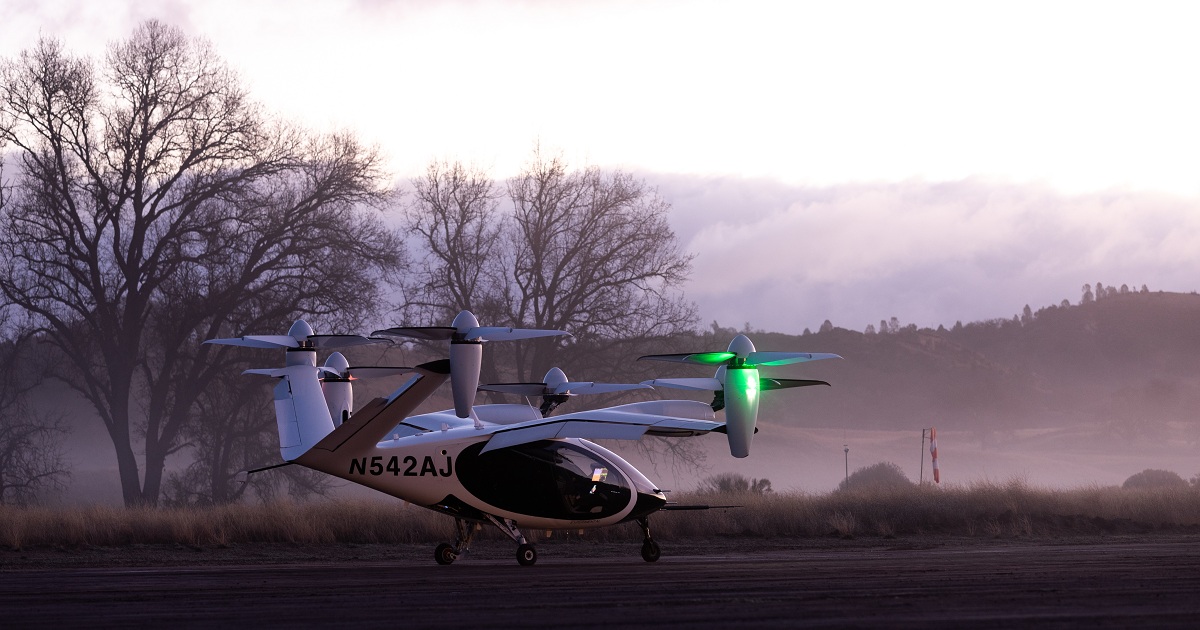Joby and NASA Collaborate to Measure Noise Footprint of Electric Air Taxi
Joby Aviation | September 02, 2021

Joby Aviation, Inc. this week became the first company to fly an all-electric vertical takeoff and landing (eVTOL) aircraft as part of NASA’s Advanced Air Mobility (AAM) National Campaign.
NASA’s AAM National Campaign is designed to promote public confidence in emerging aviation markets, such as passenger air taxis, through flight testing in realistic scenarios and data analysis that will inform the development of regulatory standards for emerging aviation platforms.
As part of the two-week test campaign at Joby’s Electric Flight Base near Big Sur, California, NASA and Joby will join forces to study the acoustic signature of the all-electric Joby aircraft, which the company intends to operate as part of a commercial passenger service beginning in 2024.
"NASA is proud to continue our relationship with Joby by gathering highly valuable aircraft safety and noise data that will contribute towards an aviation future that includes Advanced Air Mobility (AAM) operations," said Davis Hackenberg, NASA AAM mission integration manager. "Data from industry leaders like Joby is critical for NASA’s research activities and future standardization of emerging aircraft configurations. Industry partnerships are imperative for the United States to become a leader in the development of a safe and sustainable AAM ecosystem."
NASA engineers will deploy their Mobile Acoustics Facility and more than 50 pressure ground-plate microphones in a grid array that allows for multi-directional measurement of the Joby aircraft’s sound emissions. Using this data, NASA and Joby will generate noise hemispheres for the aircraft that capture the intensity and the character of the sound emitted in comparison to helicopters, drones, and other aircraft.
These readings, in combination with the noise profile of urban communities, can be used to verify how proposed aircraft operations will blend into the existing background noise. Joby has released several videos showcasing the quiet nature of the company’s aircraft during take-off, hover, and overhead flight.
“NASA has been a critical catalyst in the transition to electric aviation, and we’re proud to have partnered with them on multiple groundbreaking projects since our first collaboration in 2012,” said JoeBen Bevirt, founder and CEO at Joby. “It’s incredibly exciting to be the first eVTOL company to fly as part of the AAM National Campaign, leading the way toward a more sustainable future.”
“From day one, we prioritized building an aircraft that not only has an extremely low noise profile, but blends seamlessly into the natural environment. We have always believed that a minimal acoustic footprint is key to making aviation a convenient part of everyday movement without compromising quality of life, and we’re excited to fly with NASA, our long-time partners in electric flight, to demonstrate the acoustic profile of our aircraft.”
Joby’s participation in the National Campaign marks the next step in a long history of collaboration between the two parties. Over the last decade, Joby has worked with NASA on a range of aircraft projects that have explored electric propulsion, including a long-endurance eVTOL demonstrator called Lotus, the Leading Edge Asynchronous Propeller Technology (LEAPTech) project, and the design of the X-57 Maxwell experimental aircraft now undergoing systems integration testing.
With a maximum range of 150 miles recently demonstrated during flight testing, and a top speed of 200 mph, Joby’s aircraft is designed to carry four passengers and a pilot with zero operating emissions. With more than 1,000 flight tests completed and full-scale prototypes in the air since 2017, Joby Aviation aims to certify its electric air taxi with the Federal Aviation Administration (“FAA”) in 2023.
The aircraft is powered by six propellers that tilt to enable vertical takeoff and efficient cruise flight. The number of blades, blade radius, tip speeds, and disk loading of the aircraft were all selected to minimize the acoustic footprint and improve the character of the noise produced. The propellers can also individually adjust their tilt, rotational speed, and blade pitch, helping to avoid the blade vortex interactions that cause the “wop wop” sound we associate with traditional helicopters.
Once testing is complete, a team of acoustic experts from NASA and Joby will work together to analyze the data before sharing their findings later in the year.
A blog post detailing the history of Joby’s partnership with NASA was previously published on Joby’s company website.
ABOUT JOBY AVIATION
Joby Aviation, Inc. is a California-headquartered transportation company developing an all-electric vertical takeoff and landing aircraft which it intends to operate as part of a fast, quiet, and convenient air taxi service beginning in 2024. The aircraft, which has a maximum range of 150 miles on a single charge, can transport a pilot and four passengers at speeds of up to 200 mph. It is designed to help reduce urban congestion and accelerate the shift to sustainable modes of transit. Founded in 2009, Joby employs more than 800 people, with offices in Santa Cruz, San Carlos, and Marina, California, as well as Washington D.C. and Munich, Germany.